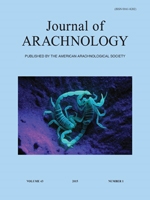Previous work has shown that jumping spiders are able to associate visual cues with shock. We tested the efficacy of vibration as an aversive stimulus. Phidippus audax (Hentz 1845) (Salticidae) were first allowed to choose between two video stimuli, a cricket and an oval. We then tethered spiders so they were oriented toward their preferred stimulus with their tarsi touching a platform, either vibrated by a motor (experimental group) or with the motor turned off (control group). Spiders were then given a second opportunity to choose between the stimuli. Experimental spiders were significantly less likely to choose the stimulus that they viewed during training compared to control spiders. Spiders stalked and ate prey soon after experiencing the training procedure, suggesting that vibration caused no lasting harm. In addition, freely moving spiders avoided a vibrating platform, supporting the assertion that the vibration itself is aversive.
How to translate text using browser tools
1 April 2015
Vibration as an effective stimulus for aversive conditioning in jumping spiders
Skye M. Long,
Anne Leonard,
Ashley Carey,
Elizabeth M. Jakob
ACCESS THE FULL ARTICLE

The Journal of Arachnology
Vol. 43 • No. 1
April 2015
Vol. 43 • No. 1
April 2015
Associative learning
Salticidae
training




